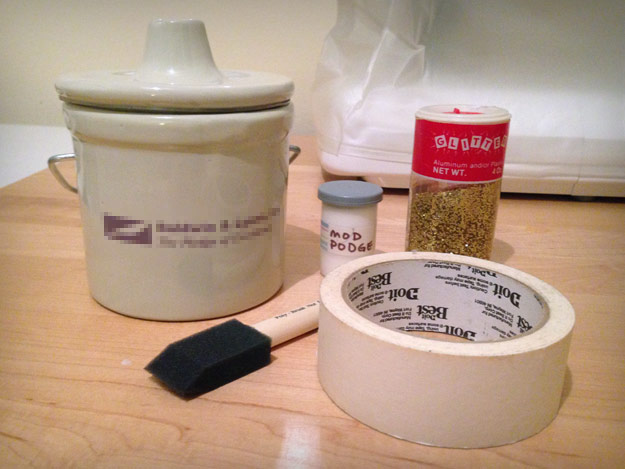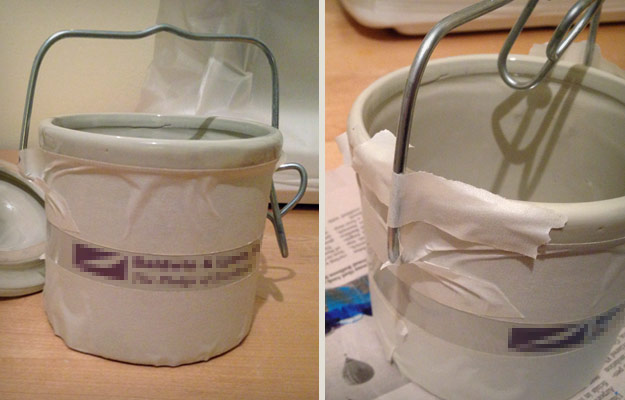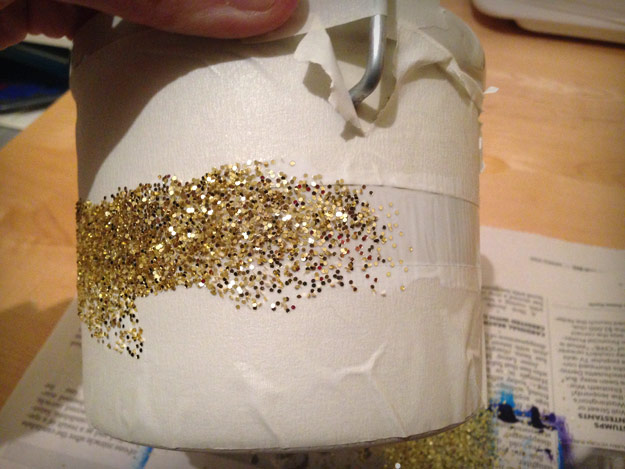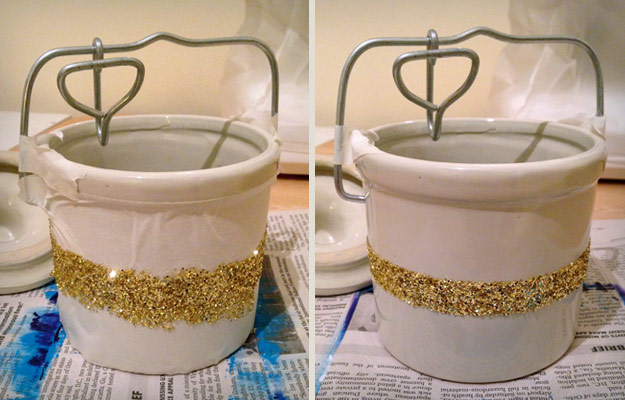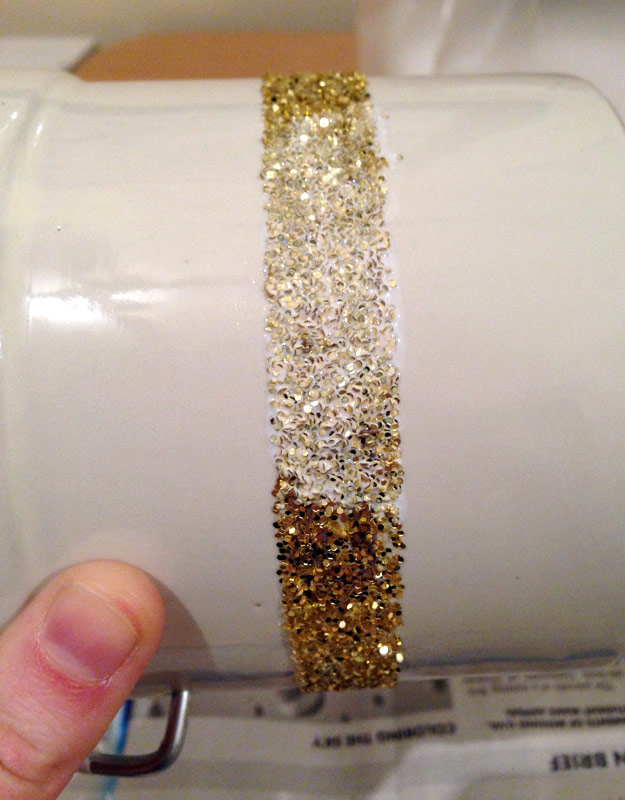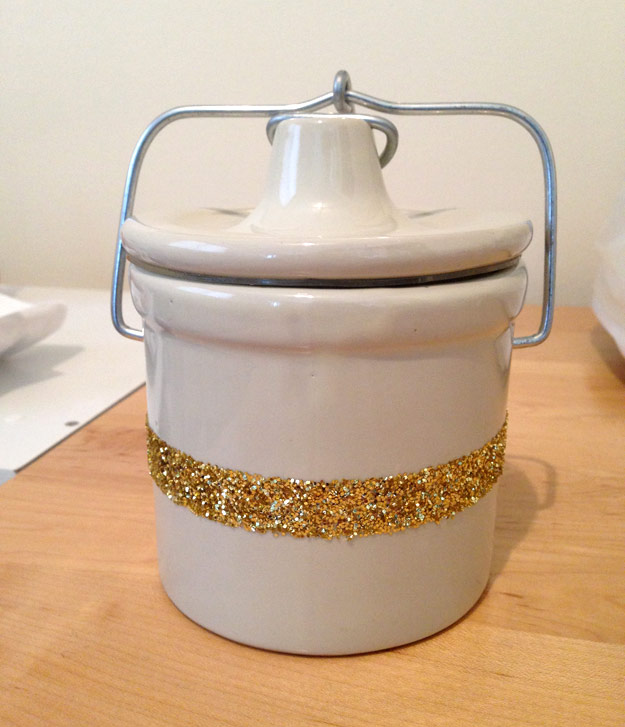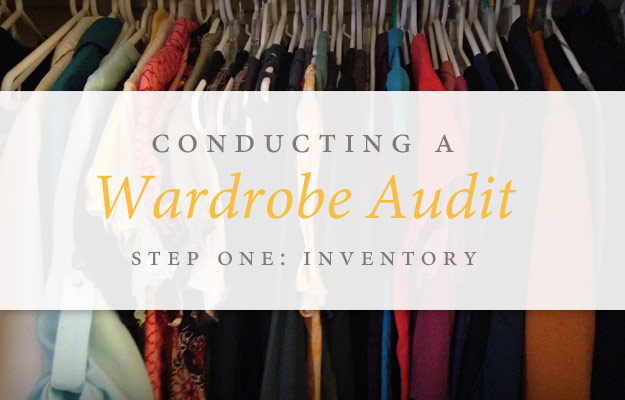Handkerchiefs: An Eco Throwback
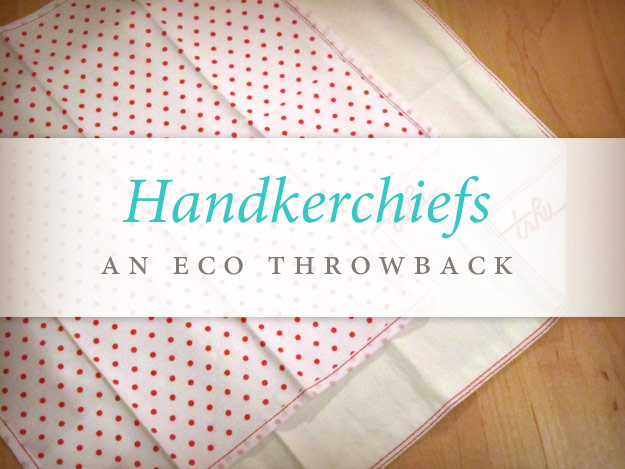
Handkerchiefs have never really been a thing during my lifetime. My experience with them is pretty much limited to what I’ve seen in historical dramas and Looney Tunes, and my vague understanding of hankies is that they’re non-disposable Kleenex, which seems kind of icky.
However, as people (including me) look to reduce their use of disposable paper products, handkerchiefs are making a comeback. I’m completely in favor of hankies in terms of reducing waste, but given my recent perception of handkerchiefs as basically snot rags, I was skeptical of their practicality and hygiene.
I reached out to Marion Poirier, co-founder and CEO of Montreal-based handkerchief company TSHU, with my questions about how well handkerchiefs can really work on an everyday basis.
Fair for All: What are some of the ways to use a handkerchief?
Marion Poirier: There are many different ways to use a handkerchief and funnily enough, lots of them don’t include blowing or wiping one’s nose!
A handkerchief is a very useful accessory to carry on one at all times and can come in handy in various situations. For instance, there is nothing like a soft, absorbent cotton handkerchief to wipe the sweat off one’s brow after an energetic workout, a bike ride or simply to deal with the heat or excessive sweating due to anxiety.
It’s also a great fix for oily hands after digging into finger food or wiping your child’s cheeks after a snack. Bearded and mustachioed men also find our hankies quite useful after enjoying a beverage! Crying or emotion can also be dealt with in style. Wiping your screen or your glasses with a handkerchief is also appropriate. Some of our clients even groom their pets with the handkerchiefs. And, for practical reasons, there is nothing like a cotton handkerchief to really blow your nose when practicing outdoor winter sports – without ending up with little debris of wet paper-tissues in your pockets.
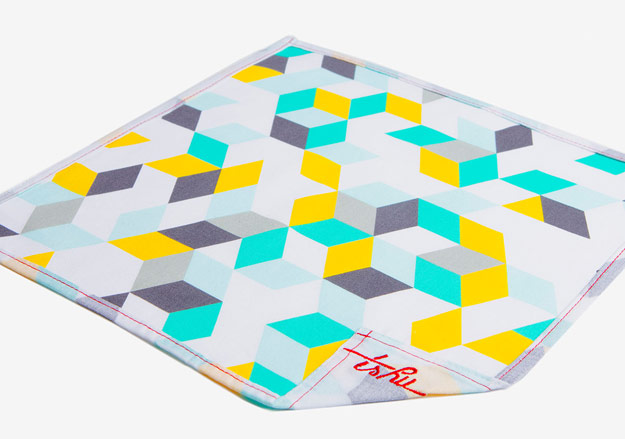
Are handkerchiefs a practical solution for people with serious nasal congestion, or are they only for those with a dainty nose drip?
Cotton handkerchiefs are definitely appropriate for real use! They are truly fantastic for people who suffer from seasonal allergies or severe colds as their noses are frequently irritated and their skin more sensitive due to excessive blowing. After all, hankies are way softer and more absorbent then regular paper tissues!
However one chooses to use their handkerchief is absolutely personal though. The idea is to try it and see what works for you! If germs are a concern for you, the same rules as using paper tissues apply: wash your hands often! And, for extra precaution, leave your handkerchief in our practical case (Casey) for hygiene and transport, wash both the handkerchief and case often and/or have a few hankies in stock as backup.
Personally, I can go through 5 or 6 two-ply hankies in a day when sick, or one every day or second day when healthy. I’ve seen people wash their hankies once a week though (or even less!) – so everything is a question of comfort and use!
How do you wash a handkerchief? If you use it to blow your nose, does it make your other laundry gross?
Caring for your handkerchief is extremely simple. Simply toss it in the machine with your laundry – cold water preferably, and lay flat or hang to dry. Bonus points for drying in the sun, as the sun naturally fades stains!
As per “contamination” with the rest of your laundry – again it’s a question of comfort. Most parents will agree that their loads have seen worse things than handkerchiefs…
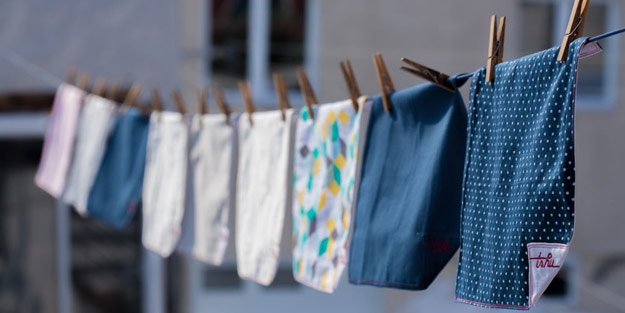
How do you handle carrying around a dirty or wet handkerchief all day if you happen to use it early in the day?
How many times you use one handkerchief is really up to you! There are several tricks to get the most out of your hanky. For instance, you can fold it where it’s been used and move on to another section, piece by piece. The surprising thing about cotton handkerchiefs is that it “magically” dries in your pocket. So, the folded part of the hanky you were using this morning may be dry by late afternoon, the water having evaporated! If it’s beyond re-using, you can also use our little case to store your dirty handkerchief. It’s always good to have a backup handkerchief, too. There’s an old saying that I like to quote: “Always carry two handkerchiefs: one for show and one for blow.”
What are the differences between a handkerchief, a pocket square and a cloth napkin?
A handkerchief is usually made out of cotton and is particularly useful when soft and absorbent. A pocket square is often made from more delicate materials such as silk and wool and boast a hand rolled edge, which makes them more decorative than practical. Cloth napkins are usually way larger in size than handkerchiefs or pocket squares and are sometimes made with linen, which is not as soft on the nose.
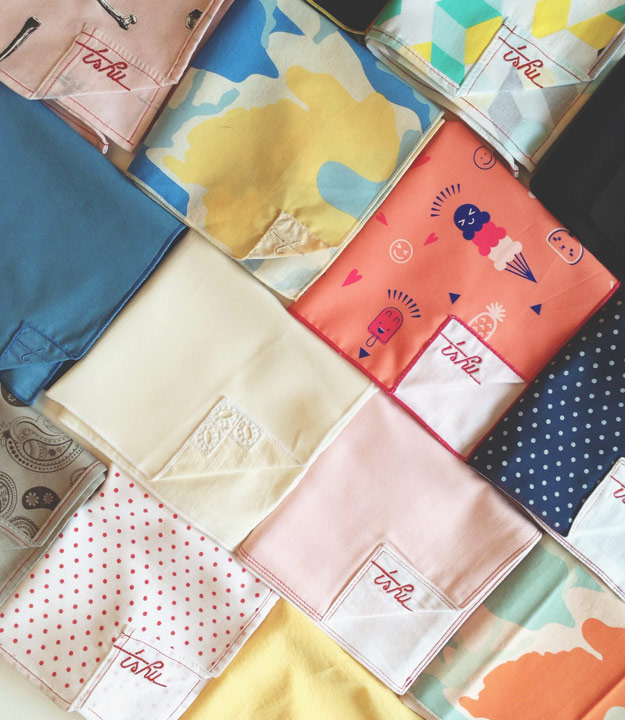
Do you carry multiple handkerchiefs, or is one usually enough?
Most people carry one or two (one for show, one for blow). I personally like to have at least one on me and I leave some everywhere for emergencies (the car, the office, my laptop case, in the pocket of the jacket I use to run, etc.).
Since starting to use handkerchiefs, how has your life improved?
In many ways! With three kids in the house, we waste considerably less. We’ve also converted to cloth napkins so we basically don’t use paper tissues or towels at all anymore.
Aside from the environmental impact, I’ve absolutely converted to the habit and don’t find the use of paper tissues to be agreeable any more. In comparison, they are way too thin & fragile and not as soft as our cotton handkerchiefs!
I’ve also found that having a TSHU on you is incredibly practical for every day life and use my handkerchiefs to deal with the unexpected frequently. I’m always proud to pull out a beautiful, colourful hanky to save a situation or politely refuse paper napkins at a deli when ordering a sandwich!
___
Marion sent me two TSHU hankies to try out: the one-ply polka-dotted Henri and the two-ply organic Dwight. TSHU handkerchiefs are handmade in Montreal, and the company plants a tree for each handkerchief adopted (TSHU calls each purchase an adoption—cute!).
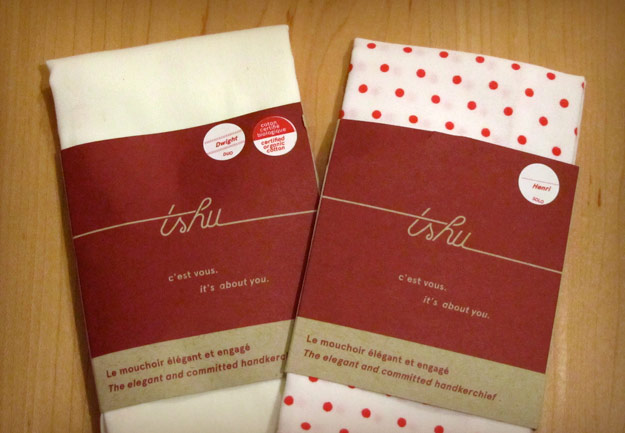
As a cloth napkin user, I like the idea of a pseudo-napkin I can take with me anywhere. And with the weather (hopefully) warming up soon, it will be nice to have something to wipe the sweat off my face with after a run or a particularly energetic swing dance. I plan to use the hankies for at least 30 days, then I’ll report back about the practical ins and outs.
Have you ever used a cloth handkerchief? What was your experience?
Disclaimer: TSHU provided me two free handkerchiefs to review in a future post.

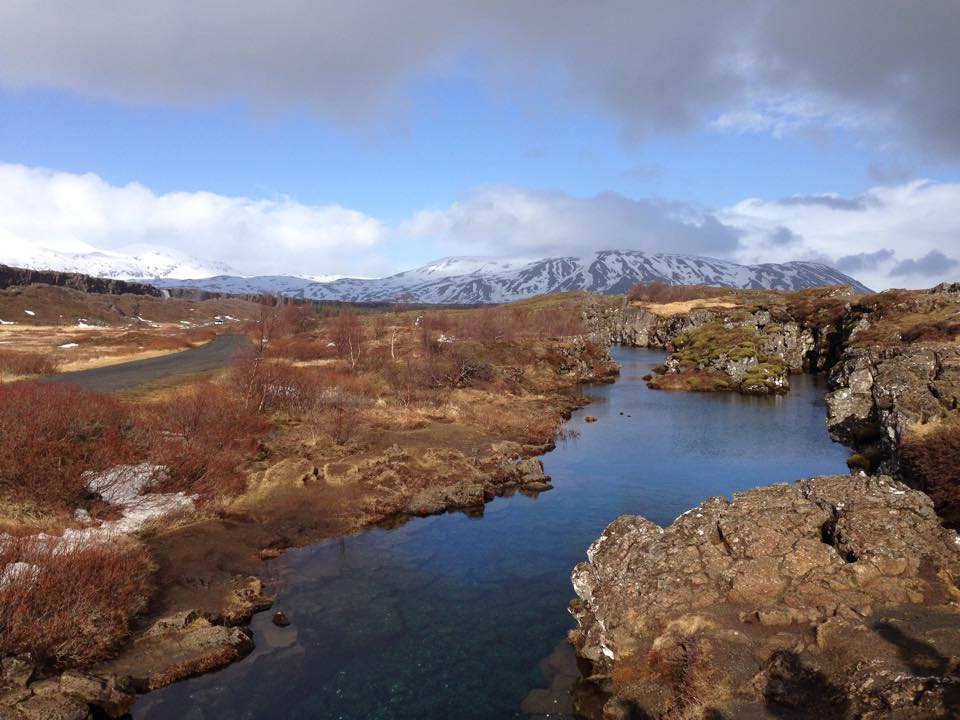


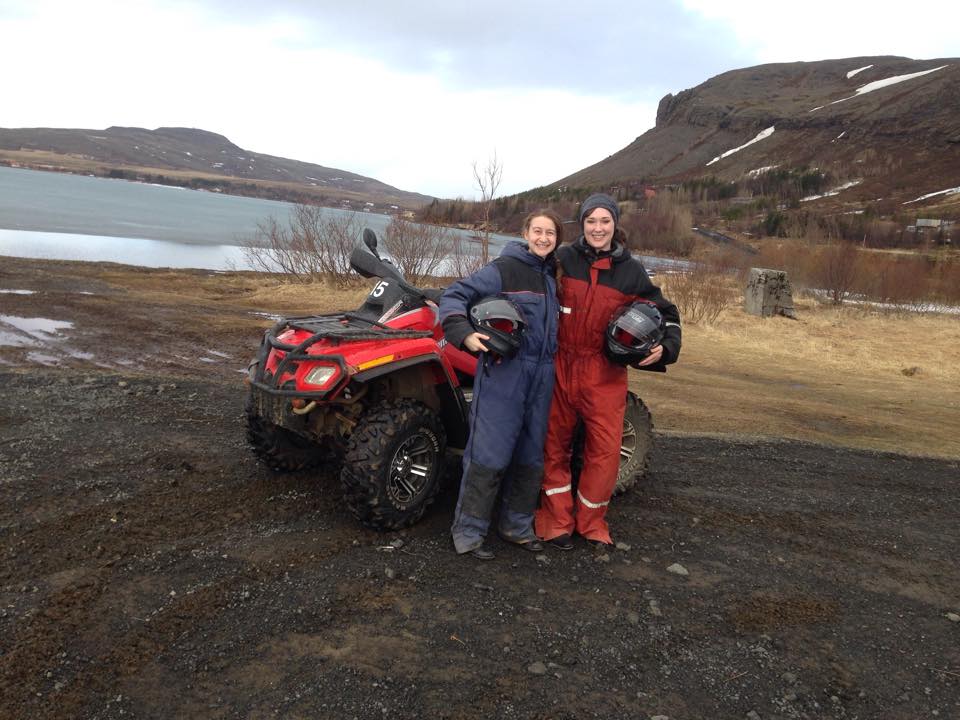
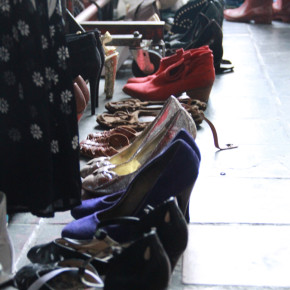 It’s a thin, blurry line between shopping consciously, and pity shopping.
It’s a thin, blurry line between shopping consciously, and pity shopping.
